Latitudes sits down with artist Phumulani Ntuli
-----------
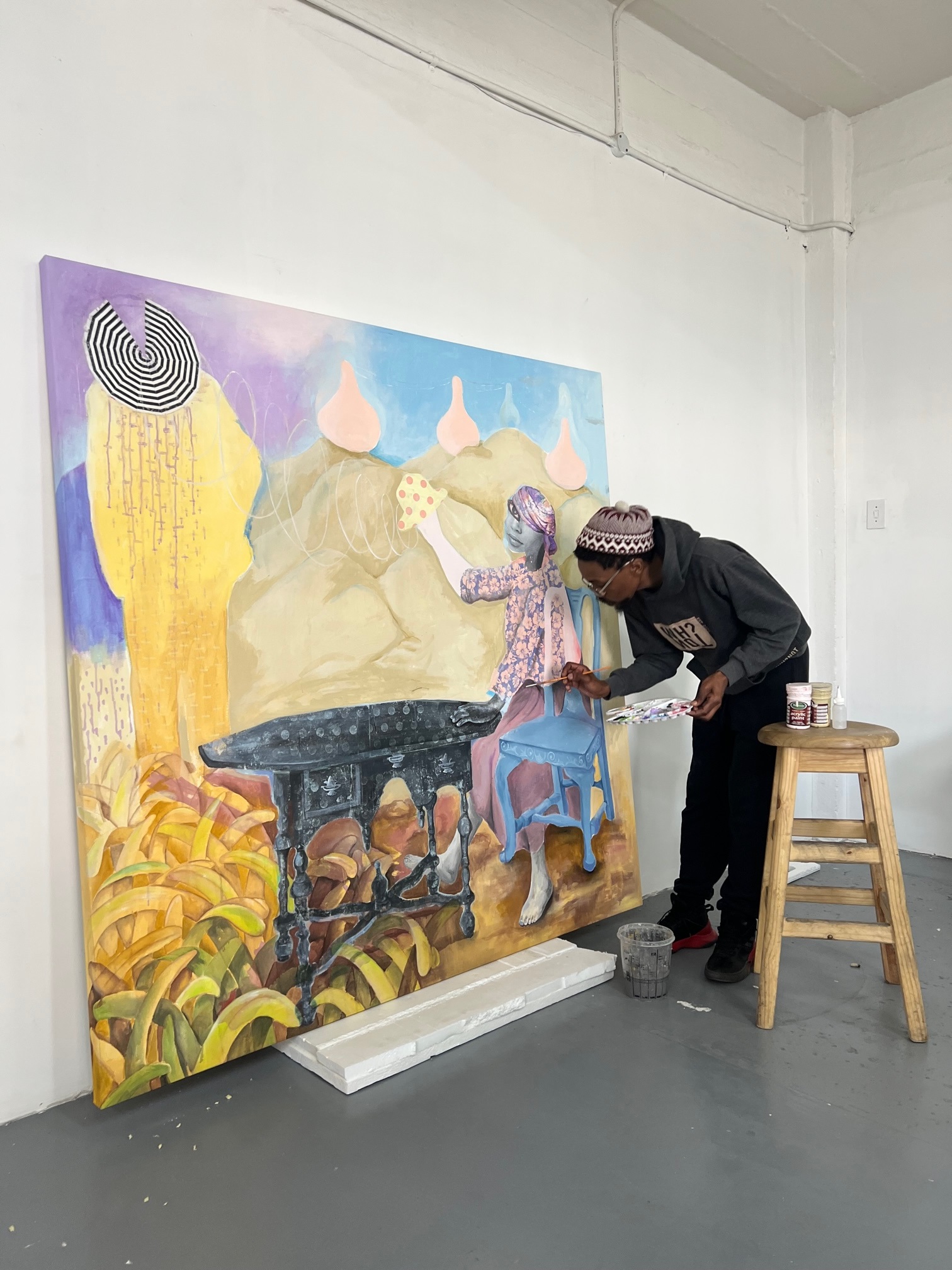
Phumulani Ntuli in studio working on a large scale collage on canvas, courtesy David Krut Projects
Latitudes Online (LO): What piqued your interest in art and how did you realise your practice from there?
Phumulani Ntuli (PN): My journey into the world of art commenced in my early years when I discovered my ability to draw. Utilising images as references became a common practice for my pencil sketches. This revelation occurred during my time in sub-B (grade 2) when my biology teacher assigned us the task of illustrating human anatomy, focusing on hands, faces, torsos, and limbs. The assignment, which we carried out over the weekend, required meticulous attention to detail as I studied my references intently.
Upon submission, I didn't anticipate much significance, but to my surprise, my teacher was captivated by my artistic skill. She summoned another teacher to inspect my drawing, leaving me momentarily anxious, thinking I might be in trouble. However, it turned out that I was being recognized for my talent. This experience boosted my confidence, prompting me to share my sketches with others, particularly at family gatherings. I even ventured into creating portraits of family members.
This artistic journey gained momentum, thanks to the encouragement of my late friend, Themba Ziphilele Moyake. Although he explored drawing and painting, he ultimately pursued African literature at Wits, leaving me to delve deeper into the realm of art. Attending seminars at Wits during my free time exposed me to academic papers and presentations, all while I maintained a full-time position in retail. This period of self-education enlightened me about university-level academic programs, leading me to apply to the University of Johannesburg after completing my undergrad.
Embarking on various projects, my first residency at Bag Factory marked a significant step in my artistic pursuits. Subsequently, I pursued an MFA in Switzerland, kept afloat by a partial scholarship I was fortunate to receive.
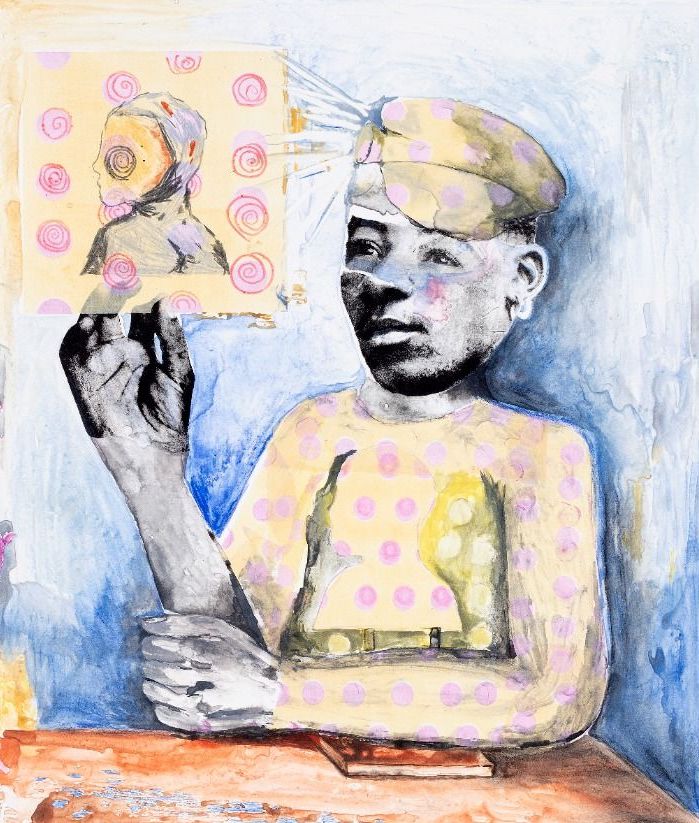
Phumulani Ntuli, Prompt search from a generative console, R 26,086.96 ex. VAT, CONTACT TO BUY
LO: As I understand it, your practice explores notions of black futurity and the archive - and to quote Lukanyo Mbanga “a futurist is a historian by default”. What is the significance of this intersection between past and future and how is it represented in your work?
PN: South African artmaking grapples with the shadows cast by its political history, an imprint evident in artworks mirroring the prevailing societal norms—a long-standing, one-size-fits-all approach. I contend that history, tainted as it may be, permeates the archive, and, as an artist, my perpetual endeavour is to demystify the structure within this archival framework. My exploration often navigates the realms of film and documentary practices, revealing the potential for fictionalisation within digital art forms like film and photography.
On one hand, there is a probing of the media itself, utilising it as a departure point to conjure the absent elements and scenes. On the other hand, there exists a reconsideration of the media as an empowering instrument. In my artistic process, I sketch landscapes, reference various sources, and capture photographs, and appropriate images from open archives. This amalgamation of processes occasionally disrupts the pathways to visualisation, mirroring the interference of social media in our interpersonal connections and presence. Amidst these futuristic flights through such interferences, the aim is to render visible the obscured references in this operation and explore novel avenues for image generation that empower, rather than regress.
The futurist strives to integrate and reconcile the media, drawing upon an extensive array of infrastructures. Viewing these modes of practice as open source, akin to open archive images, the futurist treats them as collective geographies, even if they risk decommissioning. The futurist appropriates and deaccessions these archives, incorporating them into their work. Indeed, I agree with the fact that the futurist is a historian who engages in speculation, drawing, and animating the past events in the future tense.
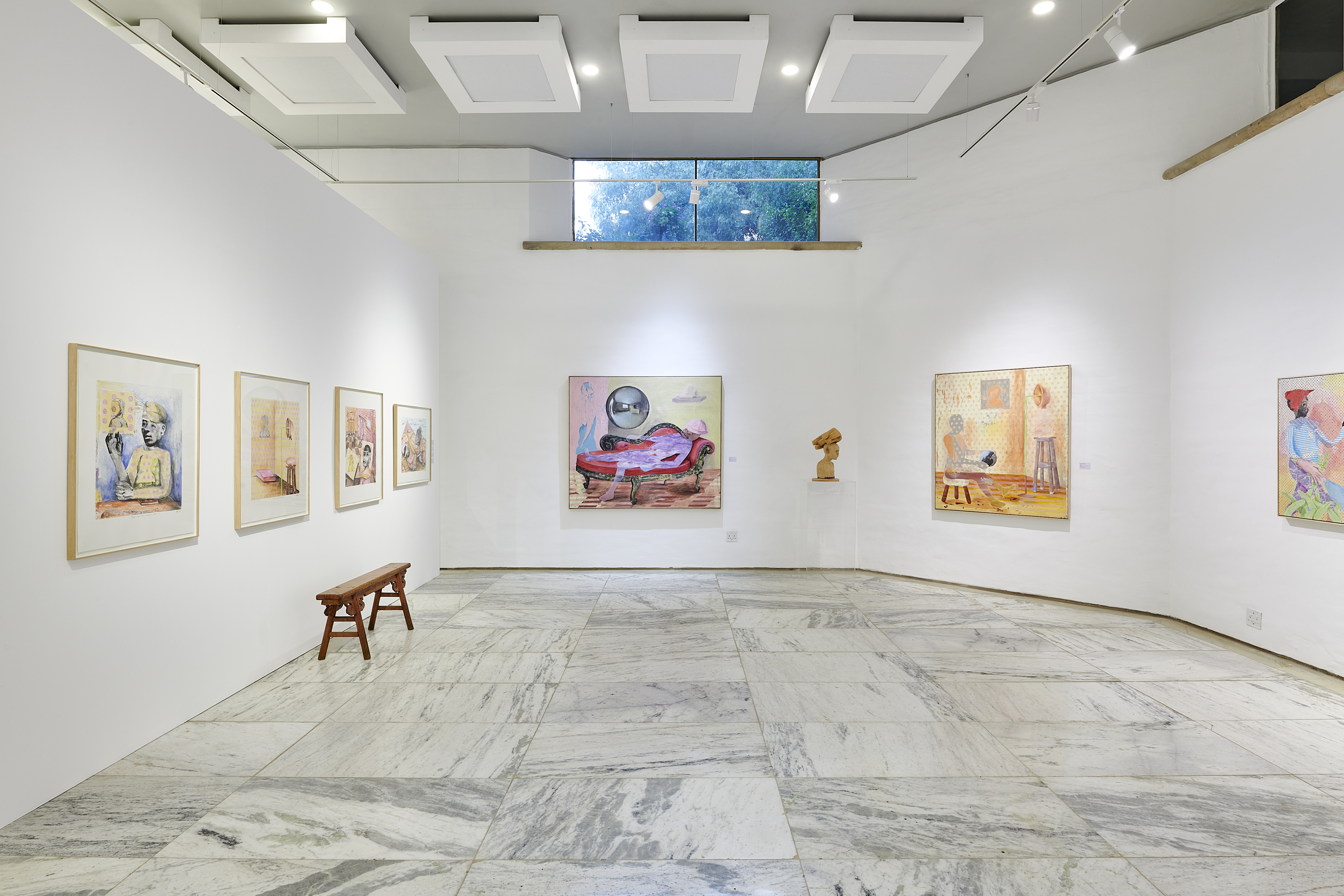 Phumulani Ntuli, Latitudes Centre for the Arts (LCA), on show until 26 January 2024, book to visit now
Phumulani Ntuli, Latitudes Centre for the Arts (LCA), on show until 26 January 2024, book to visit now
LO: As a multidisciplinary artist, how has your practice evolved over the last few years? What intrigues you and gives you creative direction?
PN: I am passionate about the emergence of innovative technologies in development, open-source platforms, the evolution of user interfaces, and immersive experiences. The potential of new media and its intersection with traditional art-making practices captivates me. This convergence is evident in various forms, such as software, Image Generation AI, and tools designed to simplify image production. Despite this, there exists a hesitation in recognising new media art-making as a process-based activity, with these technologies often seen as post-production tools.
Take, for instance, digital images and their analogues. While they are typically encapsulated when viewed online, the metadata, code biases, and underlying architecture shaping these digital images remain unnoticed. It's crucial to acknowledge how these elements influence content manipulation and form.
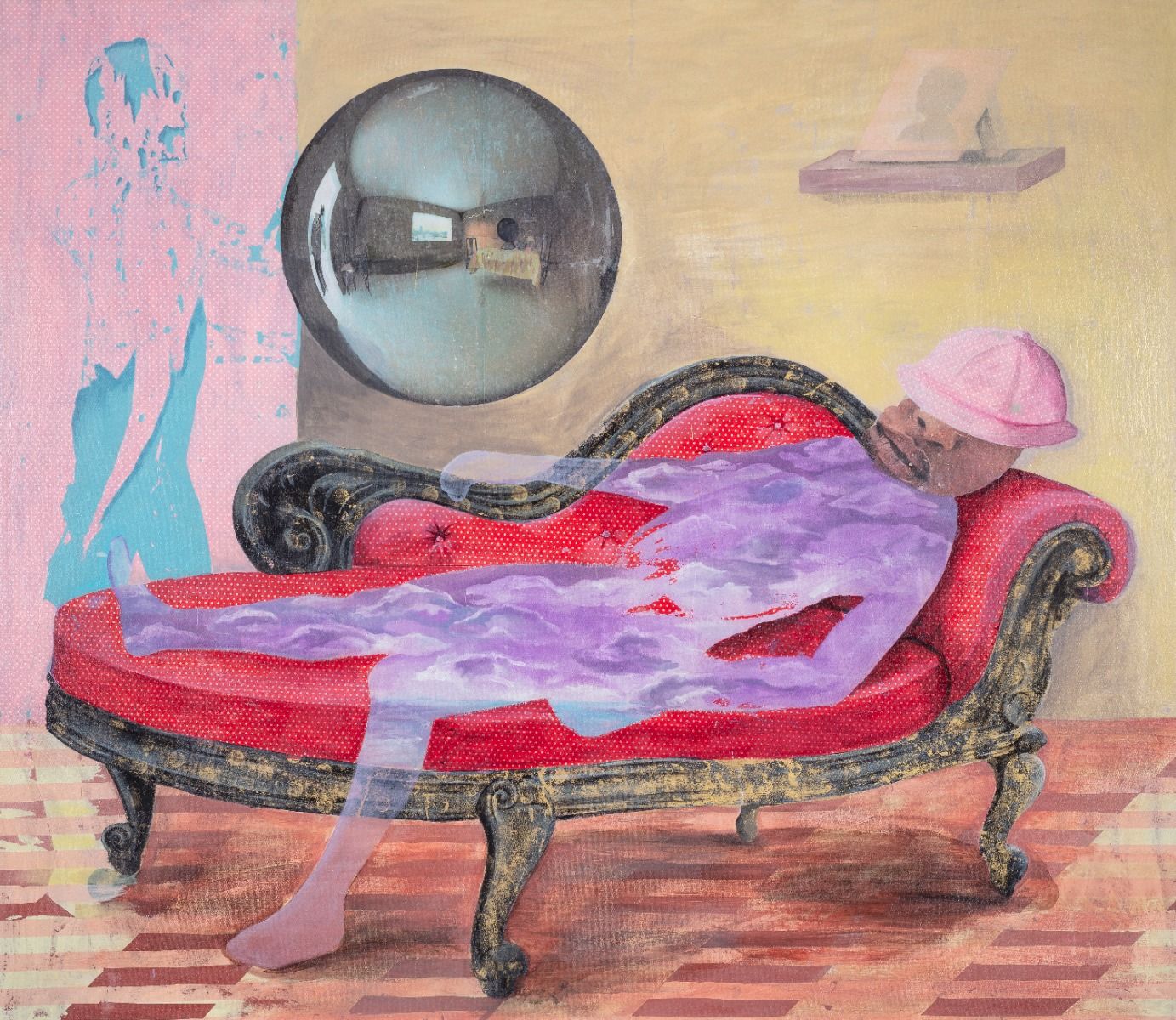 Phumulani Ntuli, Point Cloud, R 135,582.61 ex. VAT, CONTACT TO BUY
Phumulani Ntuli, Point Cloud, R 135,582.61 ex. VAT, CONTACT TO BUY
These reflections drive my creative impulse. I am constantly exploring alternative ways to navigate the online space, steering away from conventional social media platforms. This exploration spans open-source platforms, software, and unconventional practices for visualising and manipulating images. Moreover, I actively engage in collaborative efforts with developers within my collective practice, leveraging insights gained as research processes or as integral components of new artistic work.
LO: You are an artist who strives for independence in your practice. What about this is so important to you?
PN: During my formative years as a young artist, the prevailing trend in Johannesburg was for artists to consign with galleries, curators, or project spaces. This meant actively seeking opportunities that aligned with their artistic vision or responding to invitations that came their way. This approach was widespread among many emerging artists in Johannesburg, and I believe it continues to be the norm. Independent practices, often manifesting in collective studios or project spaces—examples being the late Assemblage Studios and the current Bag Factory Artists Studio—constitute a significant and enduring model within the professional art-making landscape.
Within this artistic milieu, discussions revolve around project-based practices, collaborations, residencies, and pop-up exhibitions, among other avenues. For many emerging artists, adopting this mode of operation has become almost intuitive, providing a means to showcase their work and gain visibility within the art world. Independent practices typically involve navigating from one project to the next, sometimes engaging in collaborative efforts while also carving out time for individual pursuits. This operational template became a standard for me early on, and I now find myself more at ease and confident in working this way.
 Opening night at Latitudes Centre for the Arts (LCA), featured monotypes by Phumulani Ntuli on show until 26 January 2024, book to visit now
Opening night at Latitudes Centre for the Arts (LCA), featured monotypes by Phumulani Ntuli on show until 26 January 2024, book to visit now
It's worth noting that embracing independent practices doesn't necessarily preclude being associated with established institutions. Many artists aspire to have a presence in such spaces. For me, the concept of independent practice evolved organically, influenced by the direction my career was taking. Faced with a particular set of circumstances, I had to make choices—whether to prioritise my own artistic endeavours, collaborate with fellow practitioners, or actively seek opportunities aligned with my ethical values in the art business.
LO: What would you advise other artists who wish to remain independent? What have been some of your biggest learnings and challenges along the way?
PN: Firstly, I believe most artists aspire to establish stability in their careers. While the idea of being part of a stable environment is often inherent in an artist's mindset, navigating the independent route requires actively seeking and seizing opportunities that align with one's vision. Despite the challenges of maintaining independence, such as juggling multiple roles, it is important to handle these tasks efficiently to strike a balance between creative expression and business responsibilities.
Maintaining a clear intention is equally vital. Drawing from my personal experience, I registered a business and took deliberate steps to acquire the necessary skills for its operation. Leveraging my background in administration, I honed my business management skills. This strategic approach ensures that both the creative drive and the business aspects complement each other harmoniously.
Secondly, building a successful art career is a long-term endeavour. The concept of development remains pertinent throughout an artist's journey, even for established individuals who continually evolve their work. Engaging in meaningful collaborations within and beyond the art world is essential. This extends to professional partnerships with individuals such as lawyers, accountants, and web developers, broadening the artist's network and enhancing their overall professional framework.
LO: What tools and practices are essential to your success as an independent artist?
PN: Over the years, I've come to realise that establishing an independent artistic practice demands a diverse skill set encompassing both creative and administrative abilities. Not every artist possesses the inclination for paperwork, and the tendency to avoid it can have significant drawbacks. Therefore, I believe it's crucial for artists to acknowledge the importance of honing skills beyond their creative talents.
In my perspective, successful independent practice hinges on collaboration and the ability to define collaboration terms, recognising that these terms vary with each opportunity. Another essential component is the development of an integrated business model and plan, a task that undoubtedly requires a certain proficiency in writing. This proficiency becomes instrumental in crafting and presenting proposals effectively.
While pursuing education in an academic institution can offer numerous benefits, it is by no means the sole path to cultivating a sustainable artistic practice. However, engaging in academic pursuits can elevate one's thinking about their craft, providing a structured environment for personal and artistic growth. I highly recommend considering this avenue, as it can serve as a valuable time to seek mentorship, explore strategies for positioning oneself in the art world, and broaden one's perspective on artistic endeavours.
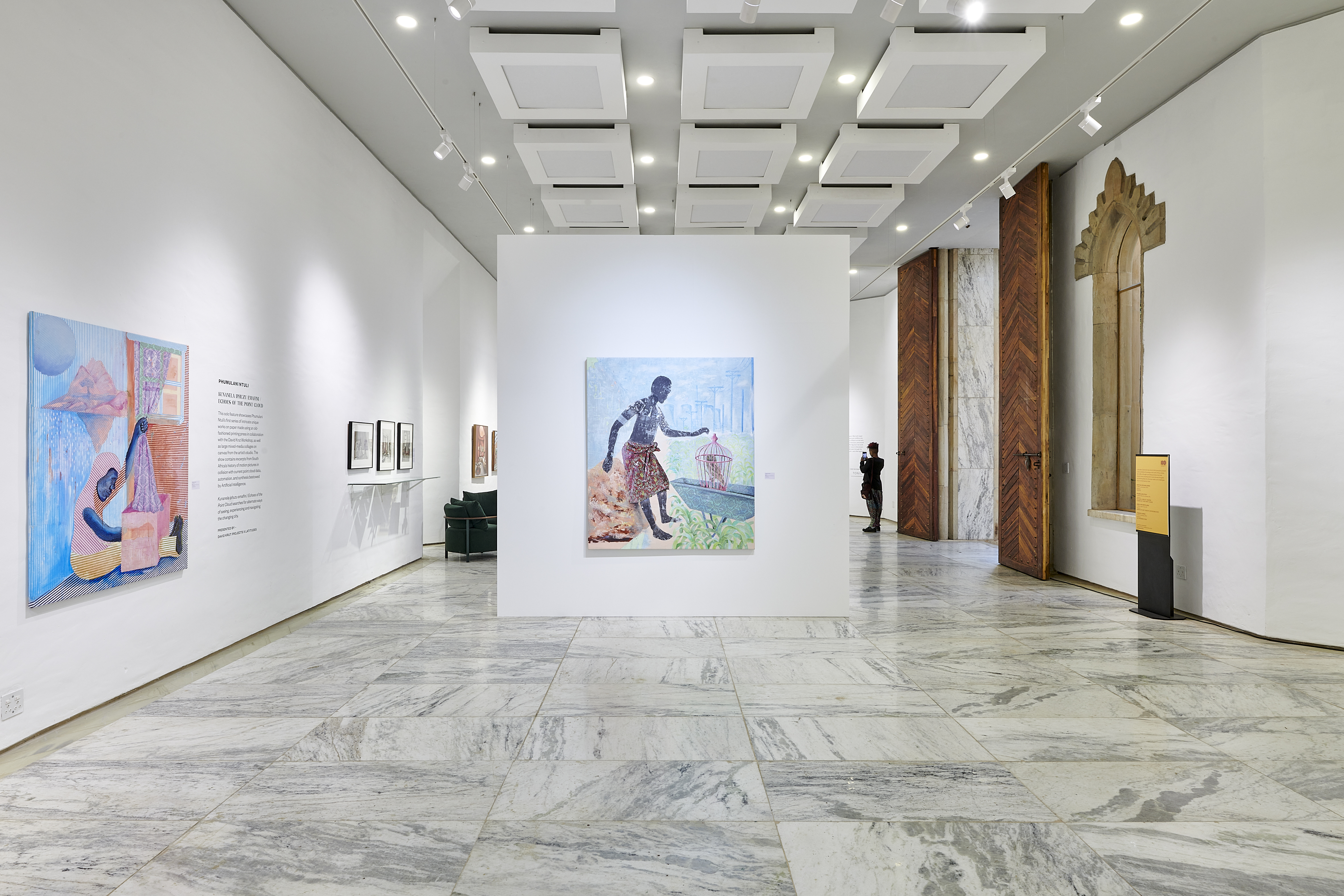
Phumulani Ntuli at Latitudes Centre for the Arts (LCA), on show until 26 January 2024, book to visit now
LO: In what way does a relationship with an organisation such as Latitudes help to bolster your independence?
PN: I had the privilege of collaborating with Ruzy Rusike, who curated my exhibition at the Bag Factory in 2021. She introduced me to Roberta Coci as part of the marketing strategy for my exhibition. This collaboration took place as we were emerging from the lockdown, bringing with it both new insights and lingering anxieties, making it an undoubtedly challenging period.
During this time, I actively engaged with the Latitudes platform, seizing all the possibilities it offered with Ruzy's valuable assistance. Latitudes, functioning as an intermediary, creates a bridge between artists and collectors, as well as institutions. This connection can be particularly challenging to establish independently. The organisation serves as a crucial third party, facilitating access to a broader audience.
Maintaining a strong relationship with Latitudes has the potential to yield positive outcomes in one's artistic career. The platform places artworks within reach of collectors and institutions, opening doors that might otherwise be difficult to access independently. A well-nurtured partnership with Latitudes can significantly impact an artist's trajectory in the art world.
![]() Phumulani Ntuli, Messages from a beacon, R 26,086.96 ex. VAT, CONTACT TO BUY
Phumulani Ntuli, Messages from a beacon, R 26,086.96 ex. VAT, CONTACT TO BUY
LO: As an artist who re-imagines new narratives and envisions future possibilities for what it means to be African, how do you envision the future of independent artistic practice and the arts ecosystem?
PN: There is no doubt that independent artistic practice will persist within the art ecosystem, as evidenced by organisations like Bag Factory Artist’s Studio, which actively nurtures both established and emerging artists, and publishers like LL Editions that engage in ongoing collaborations with artists. It is crucial to recognize that the art ecosystem is expansive, extending beyond the confines of galleries, museums, project spaces, or institutions.
All these spheres within the art ecosystem, strive to attain visibility by employing art as a catalyst for conversations, reflection, and the exploration of social relationships, as well as speculative ideas surrounding the human condition. The future of art creation is thrilling, with art undergoing transformational influences from social media platforms, new technologies, image generation models, machine learning, and artificial intelligence.
One can choose to perceive these developments as opportunities or turn a blind eye, but in either case, individuals are prompted to reevaluate their positions within these new realms of fiction. Importantly, these innovative practices need not compromise social justice. The intersection of art with social media and technology can coexist harmoniously with a commitment to freedom.
Further Reading In Articles
African Artist Directory















